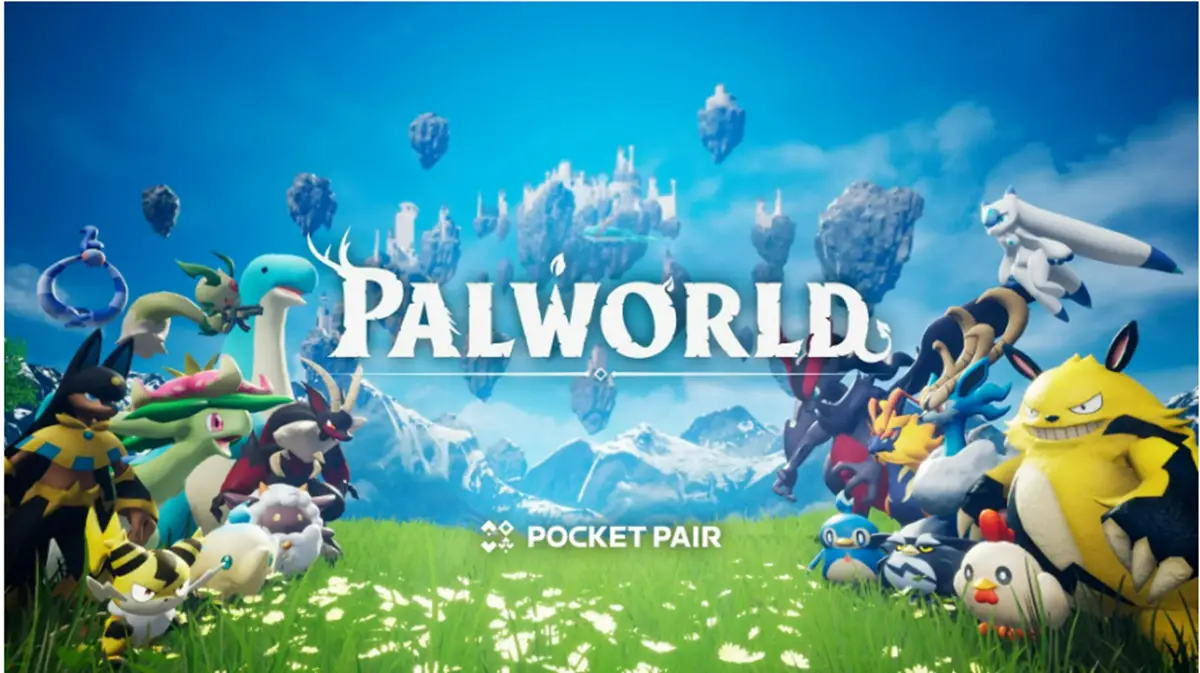The video game industry has recently been shaken by allegations against a new title called Palworld AI Generated. Developed by Japanese studio Pocketpair, this survival game has come under fire for potentially using AI to generate content and plagiarizing designs from the popular Pokémon franchise. In this article, we’ll take an in-depth look at Palworld AI, the accusations against it, and the implications for AI in game development.
Palworld AI About
Palworld AI Generated is an action-adventure survival game released in early access on PC and Xbox in late 2022.
In the game, players traverse an open world catching and battling creatures called Pals while also managing resources.
The core gameplay loop revolves around catching Pals in the wild using spherical capture devices, bringing them back to your base, breeding them, and customizing them for battle. Pals come in over 100 different varieties with elemental affinities like fire, water, and grass.
Players can catch them, breed them, make them work to gather resources, or pit them against other Pals in strategic battles.
Some additional key details about Palworld AI include:
- Developed by Japanese studio Pocketpair and directed by CEO Takuro Mizobe
- Launched into early access on PC and Xbox in November 2022
- Sold over 2 million copies in its first 24 hours according to the developer
- Features survival mechanics like crafting, farming, and resource management
- Includes over 100 unique Pals to catch and battle
- Enables breeding Pals to create new, custom creatures
- Allows customizing Pals’ AI behavior and abilities for different roles
The game quickly became a breakout success upon its launch, praising the freedom of exploration, depth of customization, and addictive monster catching and breeding mechanics. However, controversy around plagiarism and AI generation quickly ensued.
Palworld AI Generated
There is significant speculation that Palworld AI Generated utilized AI generation techniques to create its creatures and environments,
but no official confirmation. The developer’s CEO had previously discussed leveraging AI to analyze existing IP like Pokemon and generate new assets as a way to avoid copyright claims.
Many observers have noted technical signs in Palworld AI Generated art that point to possible use of generative adversarial networks or similar deep learning methods. However, without transparency from the developers, it remains theorizing.
If proven to be true, this use of AI generation to mimic copyrighted content would raise major ethical and legal issues.
The Palworld AI Generated case could set an important precedent for enforcing emerging regulations around disclosing the use of copyrighted data for training generative AI models.
Palworld AI Pokemon List
The list of known Pals in Palworld AI includes over 100 creatures that players can capture, breed, and battle with. Some of the Pals that have been highlighted for their similarities to existing Pokemon include:
- Univolt – an electric mouse Pal resembling Pikachu
- Rushoar – a fire lizard Pal similar to Charizard
- Grizzbolt – an ursine creature akin to Raichu
- Teafant – Pal with a teapot-like trunk like Drowzee
- Azurobe – a serpentine water Pal that mirrors Gyarados
- Jormuntide – a hammerhead shark Pal evoking Sharpedo
The full Palpedia in the game contains well over 100 Pals covering various elemental types, with more likely to be added through future updates. But the portions copying established Pokémon designs have drawn the most scrutiny.
How to Catch a Pal in Palworld AI
Catching Pals follows a simple process in Palworld AI:
- Craft Pal Spheres using Paldium Fragments found around the world.
- Engage the desired Pal in battle and weaken it by damaging its health.
- When the Pal’s health drops below 50%, throw a Pal Sphere to capture it.
- If successful, the Pal will be added to your collection.
Key tips are to lower the Pal’s health as much as possible without knocking it out, attack from behind for capture bonuses, and use higher quality spheres for better catch rate. Captured Pals can then be trained, bred, and customized.
Conclusion
Palworld AI highlights the increasing role of AI in game development, for both good and ill. The plagiarism accusations speak to ethics in creative media, and regulation will likely increase for generative networks.
But AI also holds much promise to push the bounds of interactive entertainment when applied responsibly.
The industry is still navigating these waters, and it remains to be seen if Palworld AI becomes a fixed point in that ongoing journey.
































